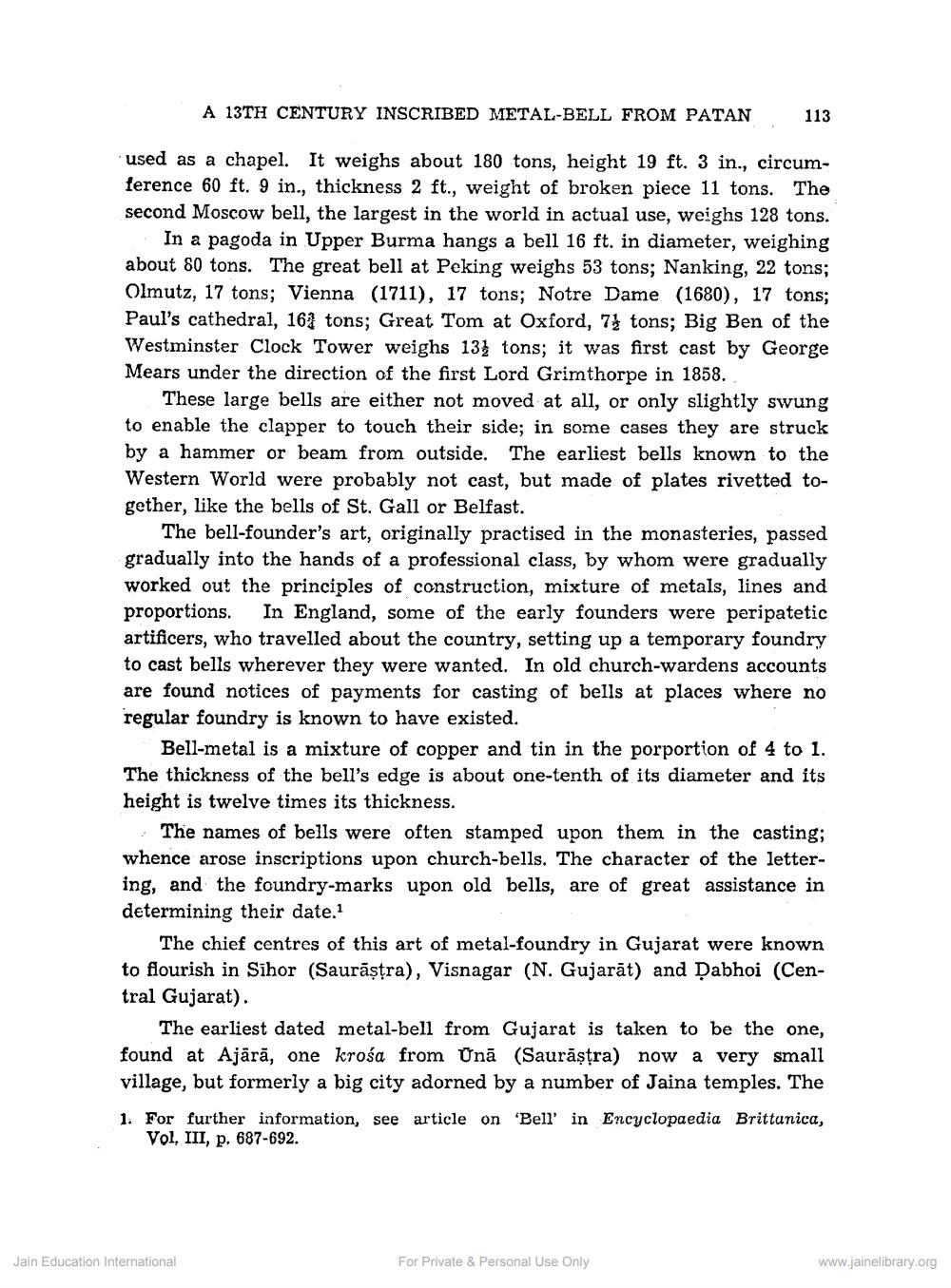________________ A 13TH CENTURY INSCRIBED METAL-BELL FROM PATAN 113 used as a chapel. It weighs about 180 tons, height 19 ft. 3 in., circumference 60 ft. 9 in., thickness 2 ft., weight of broken piece 11 tons. The second Moscow bell, the largest in the world in actual use, weighs 128 tons. In a pagoda in Upper Burma hangs a bell 16 ft. in diameter, weighing about 80 tons. The great bell at Peking weighs 53 tons; Nanking, 22 tons; Olmutz, 17 tons; Vienna (1711), 17 tons; Notre Dame (1680), 17 tons; Paul's cathedral, 168 tons; Great Tom at Oxford, 74 tons; Big Ben of the Westminster Clock Tower weighs 13} tons; it was first cast by George Mears under the direction of the first Lord Grimthorpe in 1858. These large bells are either not moved at all, or only slightly swung to enable the clapper to touch their side; in some cases they are struck by a hammer or beam from outside. The earliest bells known to the Western World were probably not cast, but made of plates rivetted together, like the bells of St. Gall or Belfast. The bell-founder's art, originally practised in the monasteries, passed gradually into the hands of a professional class, by whom were gradually worked out the principles of construction, mixture of metals, lines and proportions. In England, some of the early founders were peripatetic artificers, who travelled about the country, setting up a temporary foundry to cast bells wherever they were wanted. In old church-wardens accounts are found notices of payments for casting of bells at places where no regular foundry is known to have existed. Bell-metal is a mixture of copper and tin in the porportion of 4 to 1. The thickness of the bell's edge is about one-tenth of its diameter and its height is twelve times its thickness. The names of bells were often stamped upon them in the casting; whence arose inscriptions upon church-bells. The character of the lettering, and the foundry-marks upon old bells, are of great assistance in determining their date.1 The chief centres of this art of metal-foundry in Gujarat were known to flourish in Sihor (Saurastra), Visnagar (N. Gujarat) and Dabhoi (Central Gujarat). The earliest dated metal-bell from Gujarat is taken to be the one, found at Ajara, one krosa from Una (Saurastra) now a very small village, but formerly a big city adorned by a number of Jaina temples. The 1. For further information, see article on 'Bell'in Encyclopaedia Brittunica, Vol. III, p. 687-692. Jain Education International For Private & Personal Use Only www.jainelibrary.org




